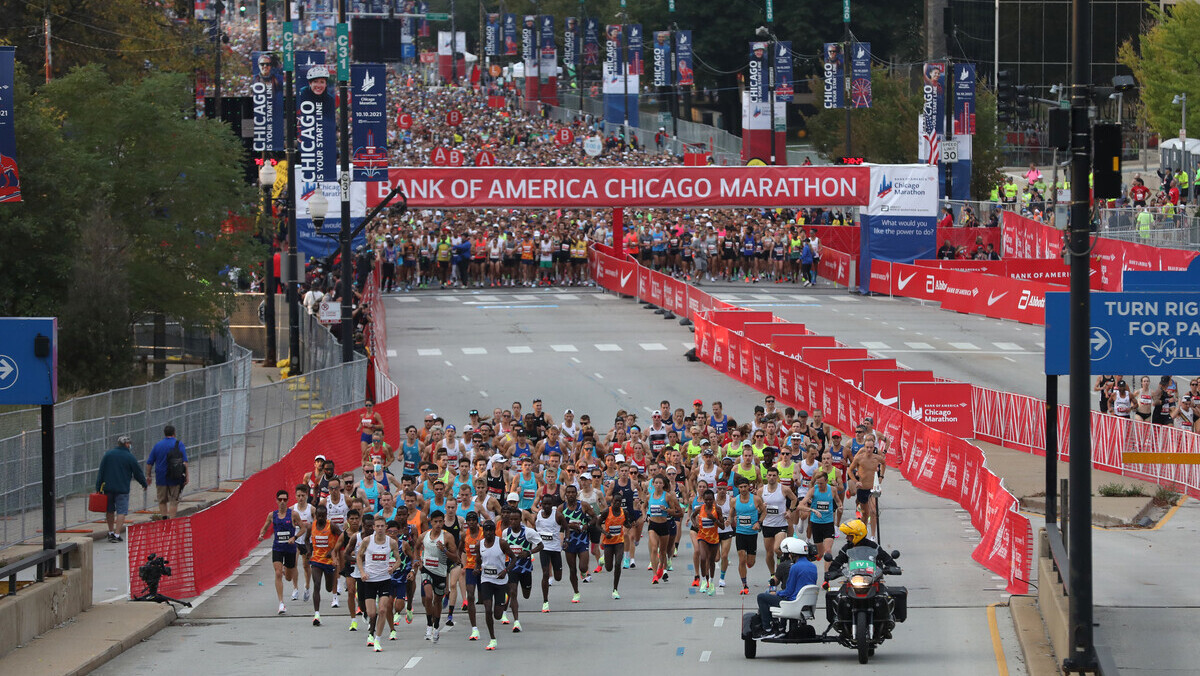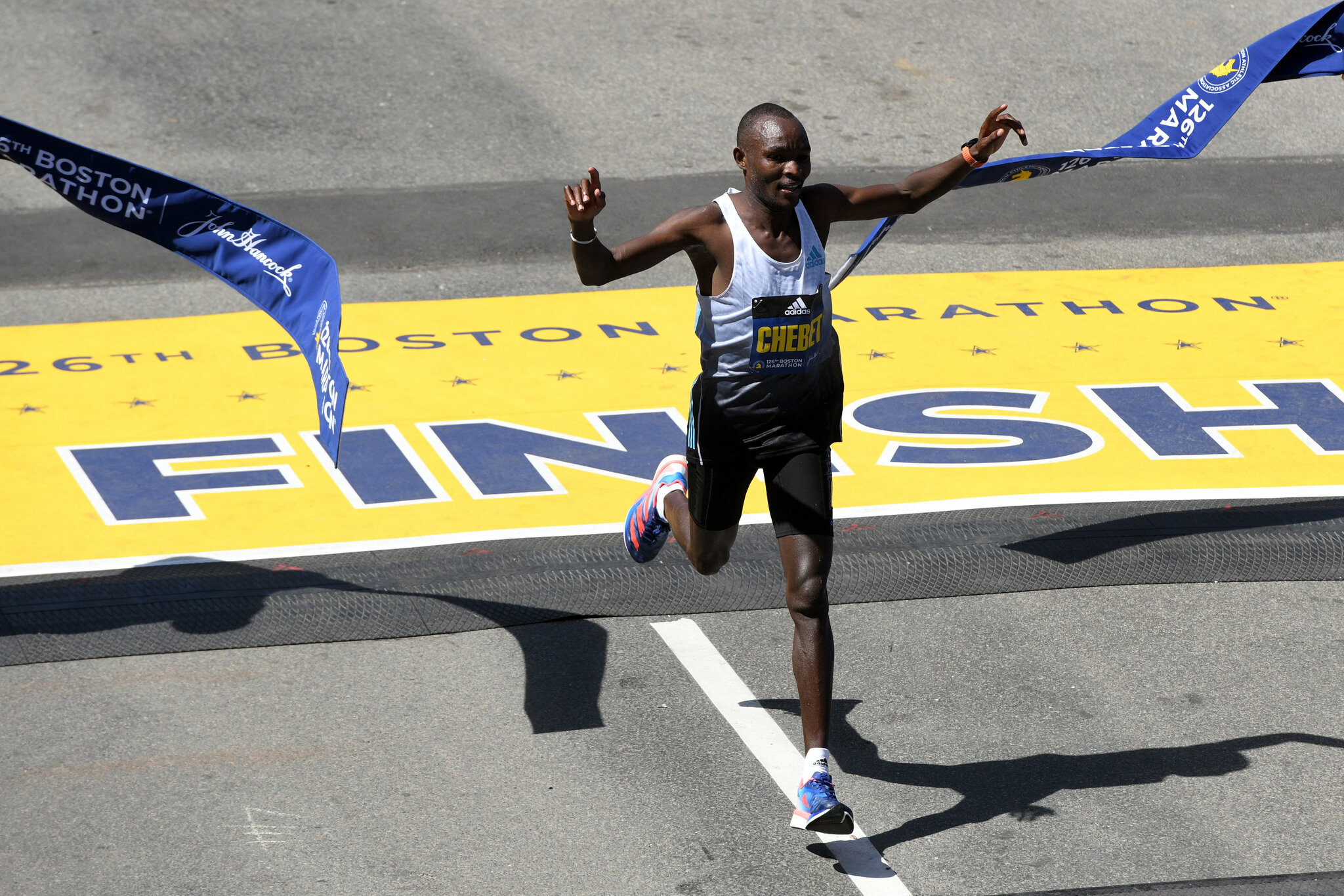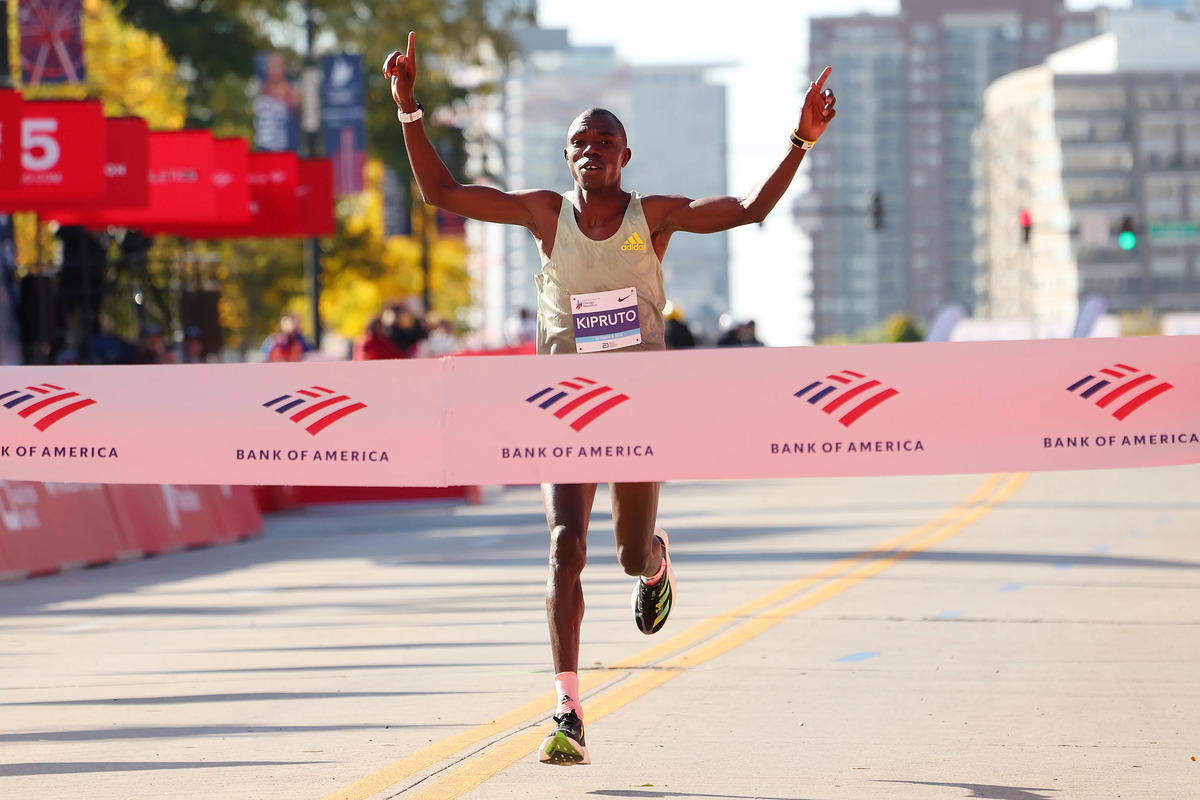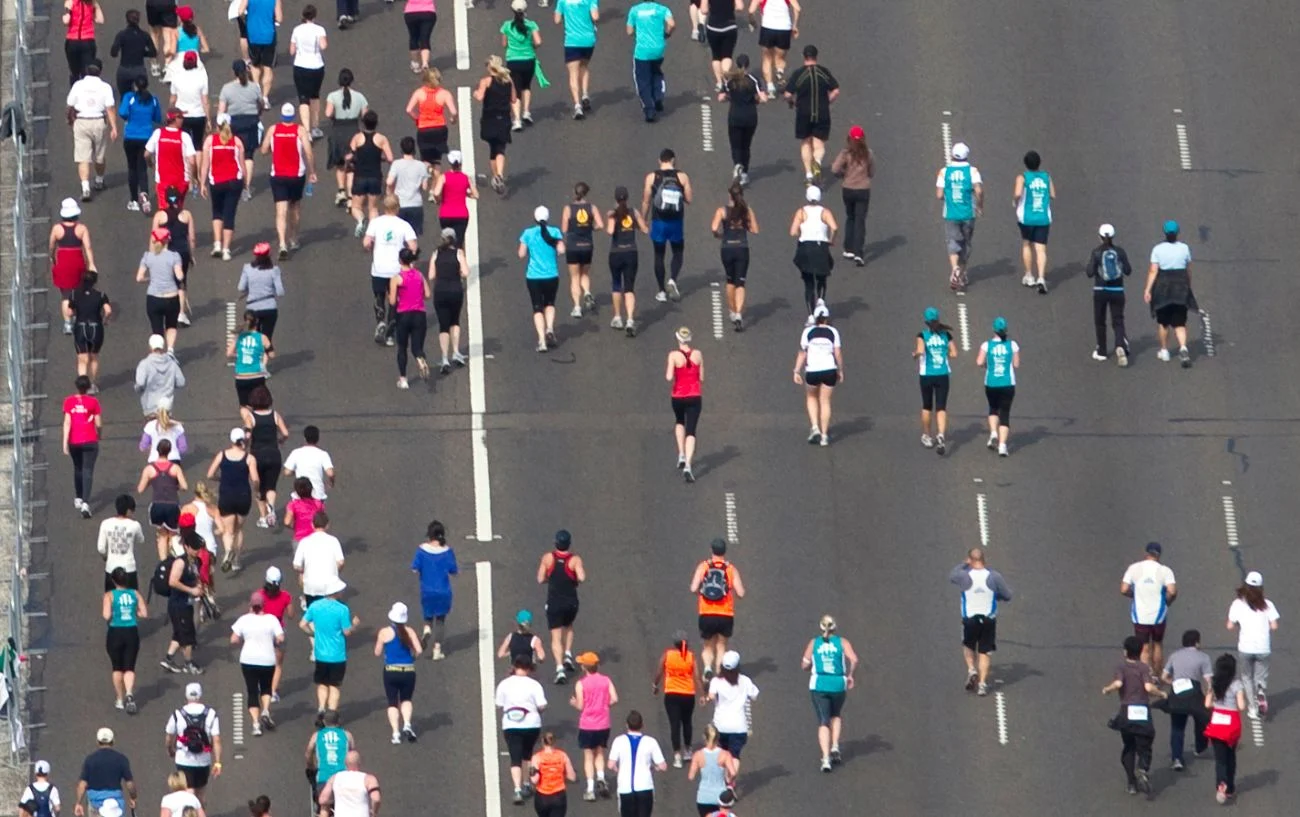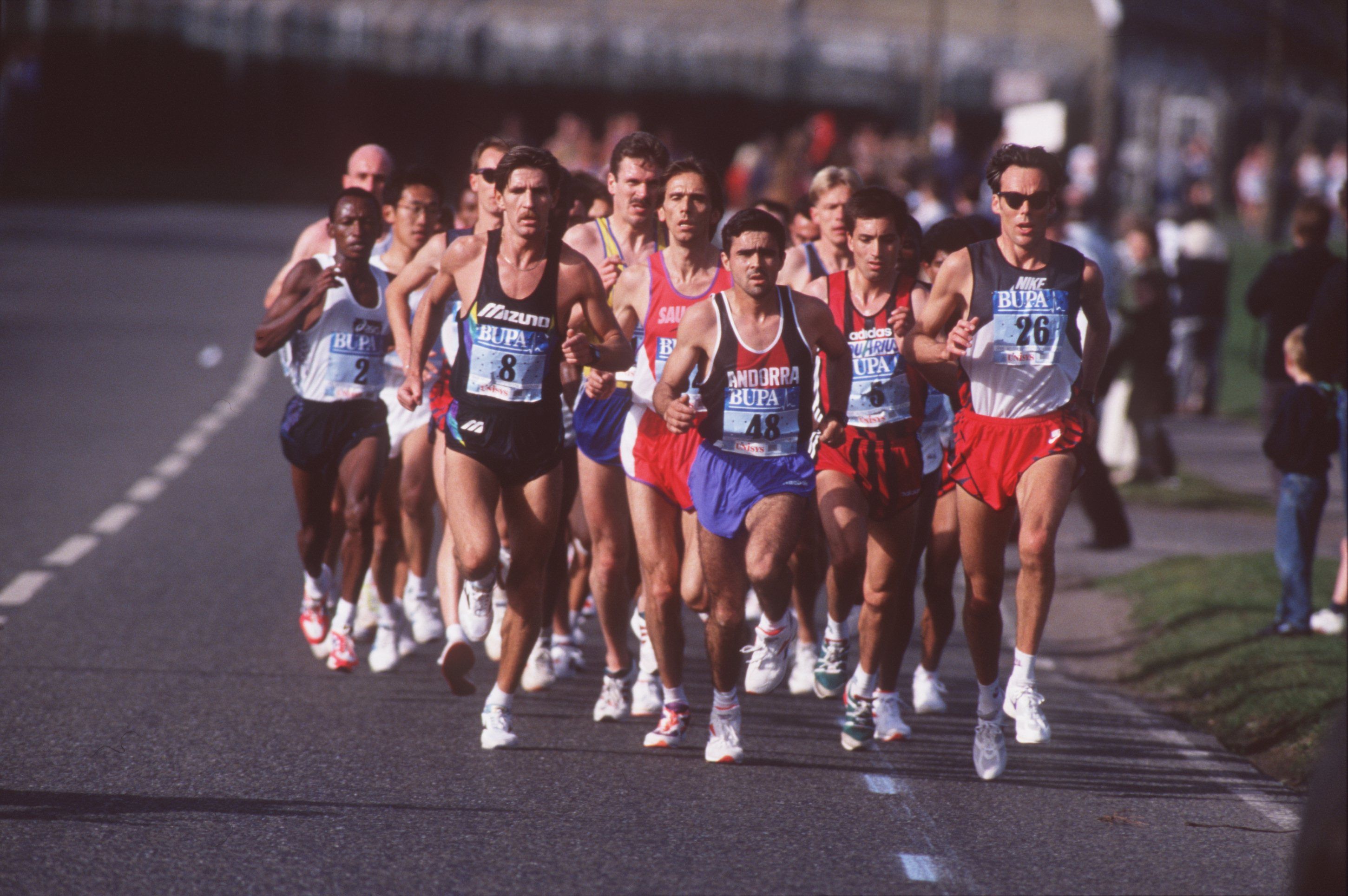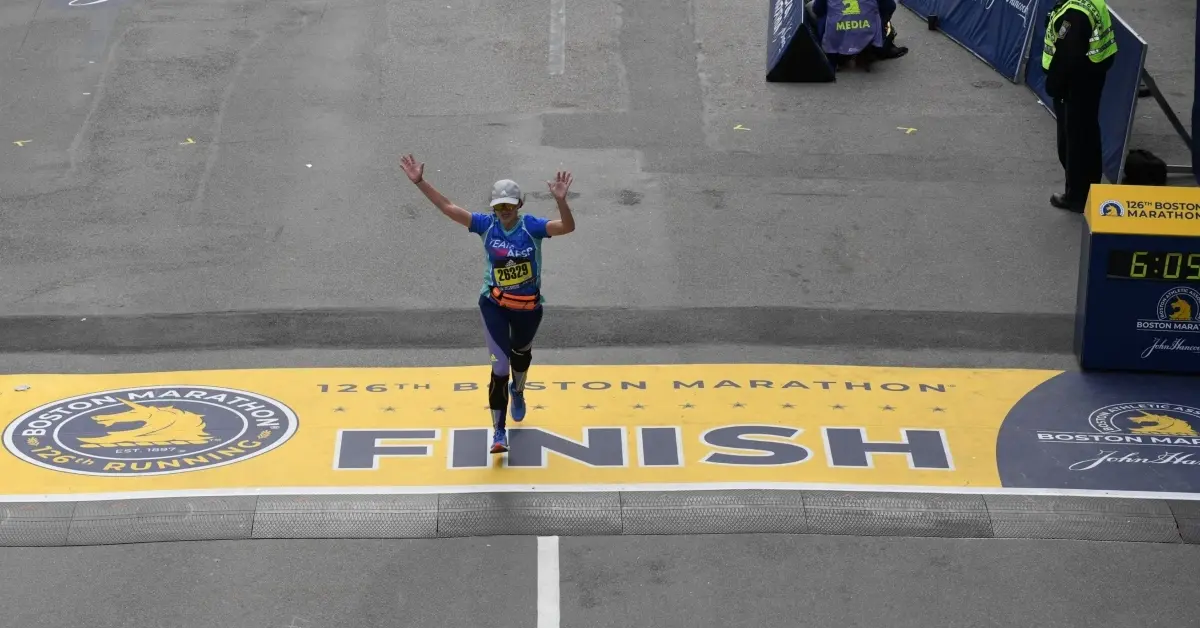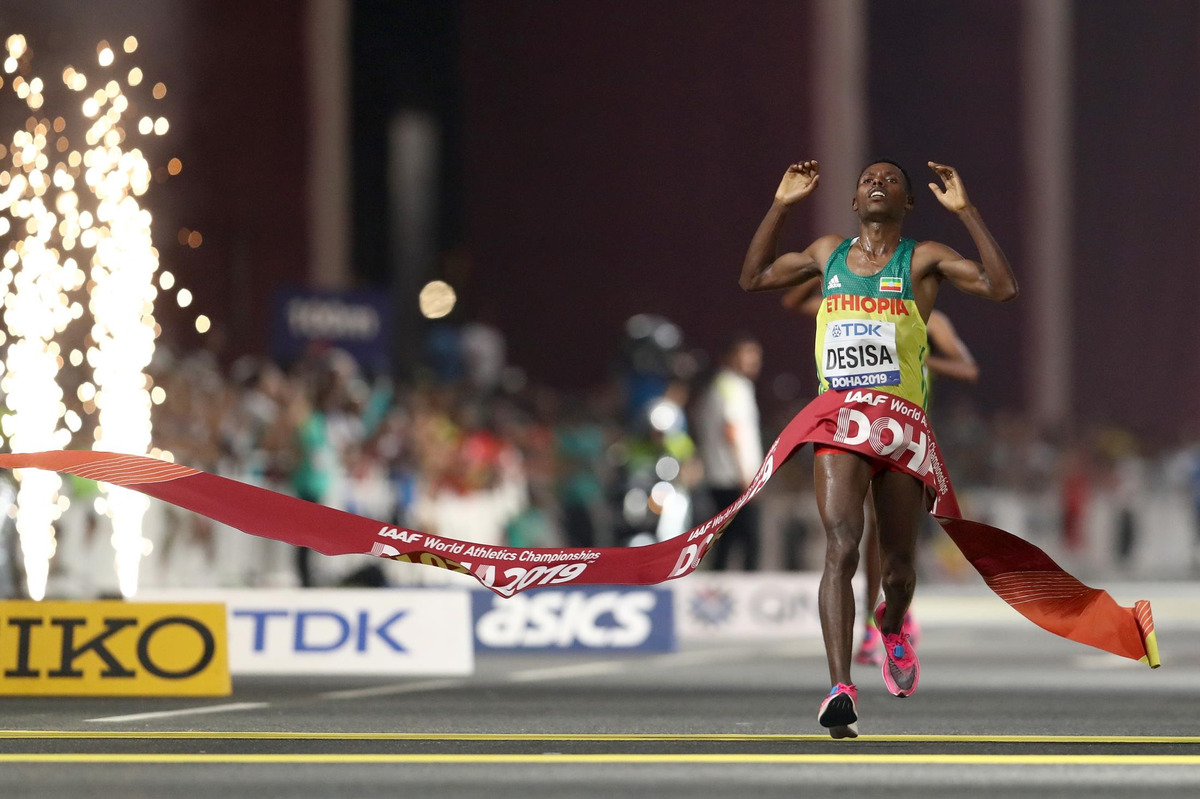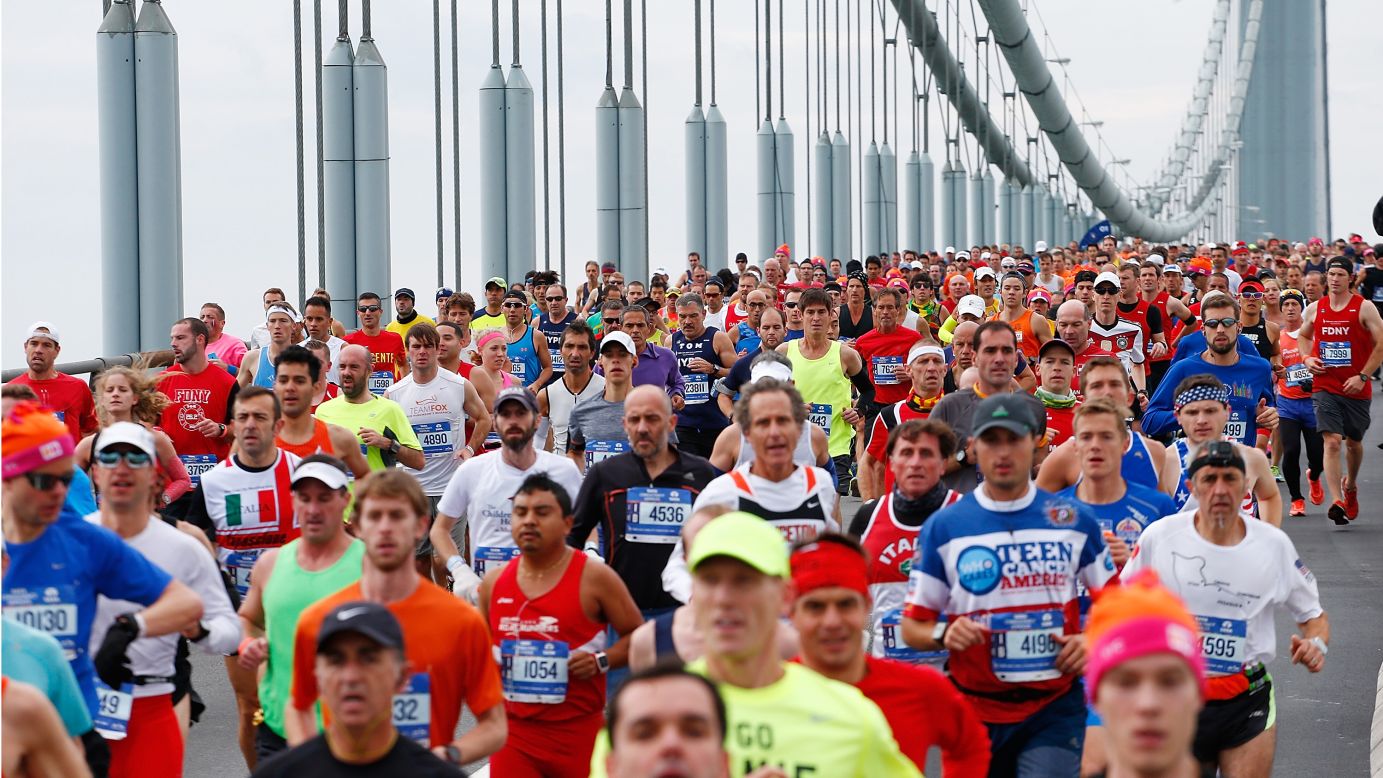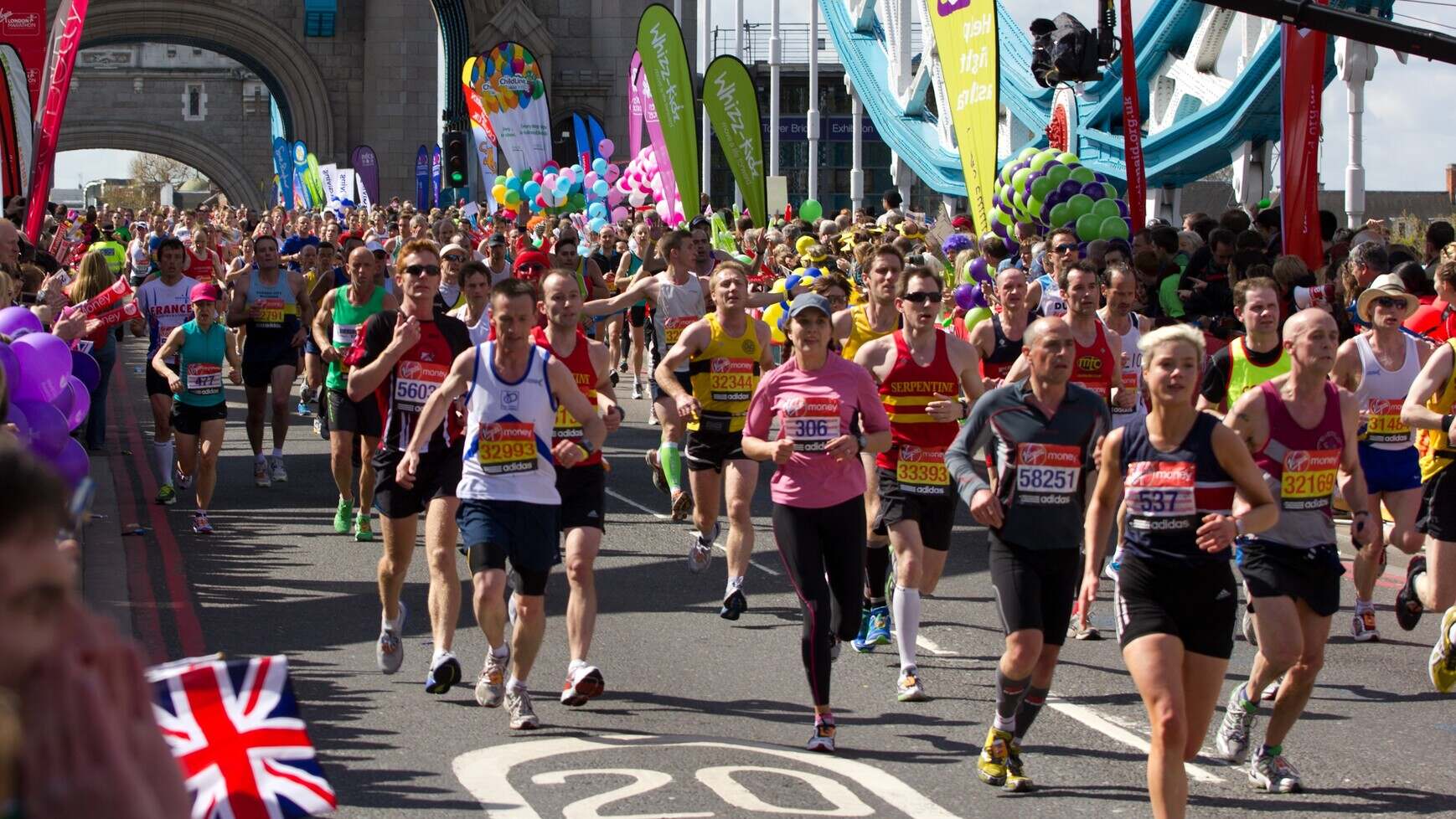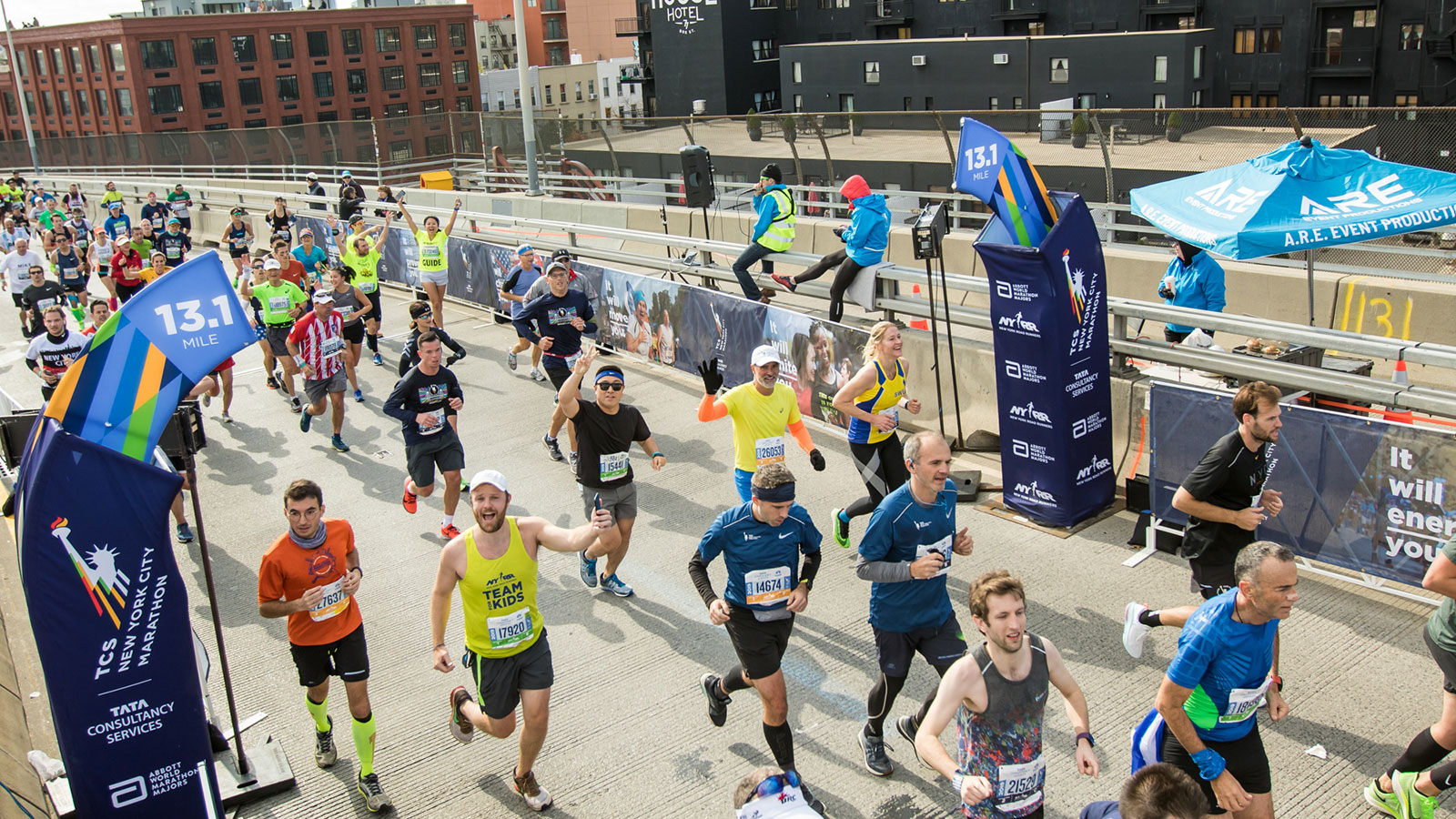Home>Misc>Featured>How Many Runners In Chicago Half Marathon
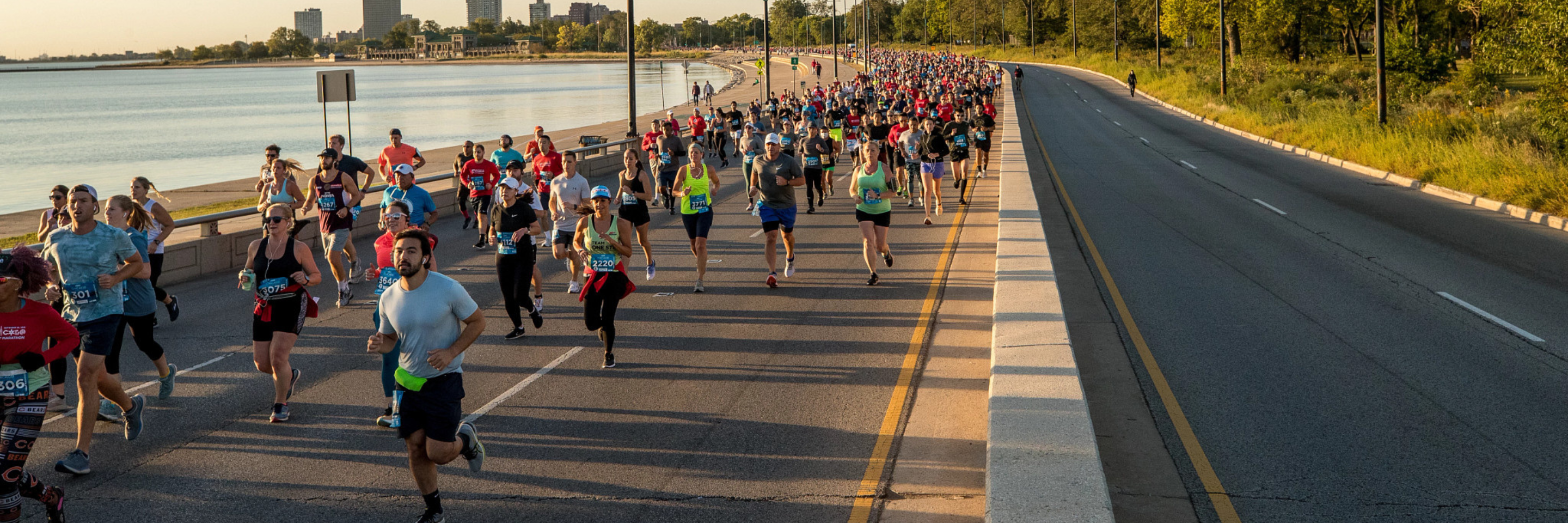

Featured
How Many Runners In Chicago Half Marathon
Published: August 29, 2023
Featured in the Chicago Half Marathon, find out how many runners participated in this popular race and get inspired to join next year!
Introduction
Welcome to the exciting world of the Chicago Half Marathon, one of the most anticipated and beloved races in the running community. Each year, thousands of runners from all walks of life gather in the magnificent city of Chicago to challenge themselves and be a part of this exhilarating event.
The Chicago Half Marathon is a prestigious race that takes participants on a scenic route through some of the city’s most iconic landmarks and neighborhoods. From the stunning Lake Shore Drive to the historic Hyde Park, runners are treated to a unique and unforgettable experience.
In this article, we will delve into the fascinating topic of how many runners participate in the Chicago Half Marathon. We will explore the methodology used to determine the runner count and analyze the results to gain insights into the factors that influence participation in this renowned race.
Understanding the number of participants in the Chicago Half Marathon is not only interesting for enthusiasts and organizers but also provides valuable information for future planning and improvement of the race. By examining the trends and patterns in runner count, we can uncover valuable insights that can help shape the future of half marathons in Chicago.
So, join us as we unravel the mysteries behind the runner count in the Chicago Half Marathon and gain a deeper understanding of the factors that make this race such a resounding success.
Background of the Chicago Half Marathon
The Chicago Half Marathon has a rich history that dates back to its inaugural race in 1997. Over the years, it has become an iconic event in the running community, attracting participants from around the world.
Organized by the Chicago Event Management (CEM), the Chicago Half Marathon has gained a reputation for being a well-organized and professionally managed race. CEM is known for its expertise in producing large-scale athletic events, and they have been instrumental in ensuring the success of the Chicago Half Marathon.
The race course itself is designed to showcase the beauty of Chicago. Starting in Jackson Park, runners embark on a journey that takes them alongside the stunning Lake Michigan shoreline and through historic neighborhoods like Hyde Park and Bronzeville. The course highlights iconic landmarks such as the Museum of Science and Industry and the University of Chicago.
In addition to the captivating route, the Chicago Half Marathon offers participants a chance to experience the vibrant atmosphere of the city. From the energetic cheering crowds to the exhilarating entertainment along the course, runners are immersed in the spirit of Chicago throughout the race.
Moreover, the Chicago Half Marathon is renowned for its commitment to philanthropy. With a strong focus on giving back to the community, the race has partnered with various charitable organizations, allowing participants to raise funds for a cause close to their hearts.
Over the years, the popularity of the Chicago Half Marathon has grown exponentially. Not only do experienced runners participate in this race, but it also attracts beginners and first-time half marathoners who are drawn to the electric atmosphere and the opportunity to challenge themselves in a world-class event. The diverse range of participants adds to the unique charm of the race, creating an inclusive and supportive environment for all.
Now that we have delved into the background of the Chicago Half Marathon, let us move on to explore the methodology used to determine the runner count in this iconic race.
Methodology for Runner Count
Counting the number of runners in an event as large and dynamic as the Chicago Half Marathon requires a meticulous and systematic approach. Chicago Event Management (CEM), the organizing body of the race, employs a comprehensive methodology to accurately determine the runner count.
The primary method used to track participant numbers is through the registration process. Runners interested in participating in the Chicago Half Marathon are required to register online or through designated registration centers. During this process, they provide essential details, including personal information and payment confirmation.
Once registration closes, the CEM team validates and processes the collected data to compile an accurate list of registered participants. This list serves as the foundation for determining the runner count.
On the race day, additional measures are implemented to ensure an accurate count of participants. Timing chips, commonly attached to each runner’s shoe, accurately record individual start and finish times. These chips are synchronized with mats placed at various checkpoints throughout the course, allowing for precise tracking of participants’ progress.
The race course is also equipped with strategically positioned staff members and volunteers who help visually confirm the participation of registered runners. They use the participant list, provided by CEM, to tick off the names of runners as they pass by, aiding in the count.
In cases where unexpected circumstances arise, such as participant withdrawals or no-shows, CEM employs backup measures to maintain an accurate runner count. This includes cross-referencing registration data with the number of collected timing chips to identify any discrepancies and make necessary adjustments.
The methodology employed by CEM ensures a reliable and accurate count of runners in the Chicago Half Marathon, providing valuable insights into the scale and magnitude of the event.
Now that we have explored the methodology used to determine the runner count, let us move on to analyze the results and gain insights into the factors that influence participation in the Chicago Half Marathon.
Results and Analysis
The results of the runner count in the Chicago Half Marathon reveal a consistently growing number of participants year after year. The race has witnessed a significant increase in both registered and actual participants, showcasing its popularity and appeal among the running community.
Analysis of the data shows that the Chicago Half Marathon attracts a diverse range of participants, including local residents, national runners, and international enthusiasts. The race has become a destination for runners looking to experience the vibrant atmosphere of Chicago while challenging themselves in a world-class event.
Furthermore, the analysis highlights the impact of various factors on the runner count in the Chicago Half Marathon. One significant factor is the race’s reputation for being well-organized and professionally managed. Runners are drawn to events with a track record of exceptional race experiences, and the Chicago Half Marathon has built a strong reputation in this regard.
The scenic and captivating race course of the Chicago Half Marathon is another contributing factor to its increasing popularity. The iconic landmarks and neighborhoods that runners pass through create a unique and memorable experience, enticing participants to return year after year.
The philanthropic aspect of the race also plays a role in attracting participants. The opportunity to make a positive impact by fundraising for charitable organizations resonates with many runners, leading them to choose the Chicago Half Marathon as their preferred race.
Furthermore, the supportive and inclusive atmosphere of the race contributes to its growing popularity. The Chicago Half Marathon is known for its enthusiastic and energetic crowds, who line the course to cheer on the participants. This sense of community and encouragement further motivates runners to participate in the event.
It is important to note that external factors, such as economic conditions and global events, may also influence the runner count in any given year. However, the Chicago Half Marathon has shown resilience and continued growth, indicating a strong and dedicated running community supporting the event.
By analyzing the results and considering the various factors that impact participation, organizers can gain valuable insights into the strengths and areas of improvement for future editions of the Chicago Half Marathon.
Now that we have analyzed the results, let us move on to explore the factors that have a significant influence on runner count in the Chicago Half Marathon.
Factors Affecting Runner Count
The runner count in the Chicago Half Marathon is influenced by various factors that contribute to its popularity and growth. Understanding these factors is crucial for race organizers to make informed decisions and further enhance the participant experience.
One of the primary factors affecting the runner count is the race’s reputation. Word-of-mouth and positive feedback from previous participants play a significant role in attracting new runners to the Chicago Half Marathon. A well-organized and enjoyable race experience creates a positive reputation that spreads within the running community, leading to an increase in participant numbers.
The accessibility and inclusivity of the event also impact the runner count. The Chicago Half Marathon welcomes participants of all skill levels, from seasoned runners to first-time half marathoners. This inclusivity promotes a sense of community and encourages individuals to take on the challenge, resulting in a higher participant turnout.
Furthermore, the time of year when the race is held can also influence runner count. The Chicago Half Marathon typically takes place in the early fall, offering pleasant weather conditions that are conducive to running. This timing allows participants to train during the summer months and showcase their training progress in the race, attracting more runners to take part.
The race course itself is a significant factor that contributes to the participant count. The scenic and iconic landmarks along the route, such as Lake Shore Drive and the Museum of Science and Industry, provide a visually appealing and engaging experience for runners. The allure of experiencing the city of Chicago while running through its vibrant neighborhoods is a draw for participants.
The marketing and promotional efforts undertaken by the race organizers are vital in attracting participants. Effective marketing campaigns, including social media outreach, partnerships with running clubs, and targeted advertising, help raise awareness and generate interest in the event. These efforts play a crucial role in driving up participation numbers.
Furthermore, the economic climate and the affordability of registration fees can also impact the runner count. A favorable economic situation and competitive pricing can make the event more accessible to a wider range of runners, leading to an increase in participant turnout.
Lastly, the availability of amenities and post-race festivities can influence the runner count. Participants are more likely to choose races that offer a well-rounded experience, including ample refreshments, medical support, and post-race celebrations. These amenities contribute to the overall participant satisfaction and can encourage repeat participation.
By understanding and considering these factors, race organizers can make informed decisions to enhance the participant experience and drive up the runner count in the Chicago Half Marathon.
Conclusion
The Chicago Half Marathon is not just a race, but an experience that captivates participants from all corners of the globe. Through a meticulous methodology, the runner count in this prestigious event has steadily grown, showcasing the race’s popularity and appeal.
The analysis of the results and factors affecting participation in the Chicago Half Marathon has provided valuable insights. The race’s reputation, inclusive atmosphere, scenic course, philanthropic endeavors, and marketing efforts all contribute to the increasing runner count.
Factors such as timing, affordability, and amenities also play a role in attracting participants. The race has successfully created an environment that challenges and motivates runners while providing a memorable experience in the vibrant city of Chicago.
As the Chicago Half Marathon continues to evolve and attract more participants, it is essential for organizers to continually assess and adapt to the changing needs and expectations of runners. This includes improving the participant experience, exploring new marketing avenues, and forging partnerships to expand the race’s reach.
Looking ahead, it is recommended that CEM continues to prioritize the race’s reputation as a well-organized and professionally managed event. Positive word-of-mouth and the endorsement of past participants can significantly impact future runner counts.
Additionally, efforts should be made to maintain the accessibility and inclusivity of the race. The Chicago Half Marathon’s appeal to both seasoned and novice runners is an essential factor in its continued growth and success.
Lastly, ongoing collaborations with local communities, running clubs, and charitable organizations can strengthen the race’s ties to the city and further promote participation in support of a good cause.
In conclusion, the Chicago Half Marathon has thrived and attracted a growing number of participants due to its exceptional organization, captivating course, and inclusive atmosphere. By leveraging its strengths and taking proactive steps to address the evolving needs of runners, the race’s future is bright, promising even more memorable experiences for participants in the years to come.
Recommendations for Future Half Marathons in Chicago
As the Chicago Half Marathon continues to grow in popularity and attract a diverse range of participants, it is crucial to consider recommendations that can further enhance future editions of the race. These recommendations focus on optimizing the participant experience and ensuring the race remains a standout event in the running community.
1. Continuous Improvement:
Organizers should strive for continuous improvement in all aspects of the race. Regular feedback collection from participants can provide valuable insights for identifying areas of improvement and making necessary adjustments. This includes evaluating the race logistics, course design, availability of amenities, and overall participant satisfaction.
2. Enhanced Communication:
Improving communication with participants is essential. Providing clear and timely information about race details, registration, and logistics can help alleviate any confusion or concerns. Regular updates through various channels, such as social media, emails, and a dedicated website, can keep participants informed and engaged leading up to and during the event.
3. Collaboration and Partnerships:
Building strong partnerships with local organizations, businesses, and charities can enhance the overall race experience. Collaborating with local communities can create a sense of unity and encourage more residents to participate or support the event. Partnerships with businesses and sponsors can provide additional resources and opportunities for participant benefits.
4. Innovating Race Features:
Introducing innovative race features can help differentiate the Chicago Half Marathon from other events. This can include incorporating technology to improve race timing and tracking, creating unique photo opportunities along the course, or introducing interactive elements that engage participants throughout the race.
5. Sustainability Initiatives:
Embracing sustainability practices can position the Chicago Half Marathon as an environmentally conscious event. Implementing recycling initiatives, reducing waste, and exploring options for sustainable and eco-friendly race materials can contribute to a more sustainable future for the race.
6. Community Engagement:
Engaging with the local community on a deeper level can foster a greater sense of connection and support for the race. Encouraging local residents to volunteer, hosting community events leading up to the race, and highlighting the positive impacts of the race on the community can strengthen the race’s ties to Chicago.
By implementing these recommendations, race organizers can ensure that the Chicago Half Marathon continues to provide an exceptional participant experience, attract a diverse range of runners, and maintain its prominent position as one of the premier half marathons in the running world.
